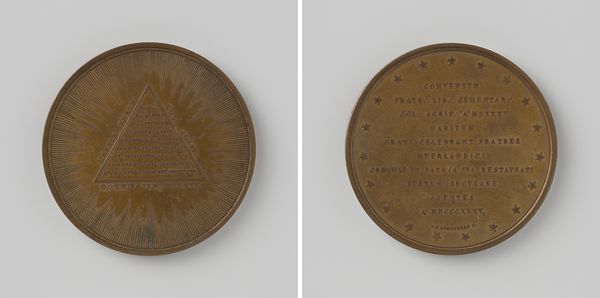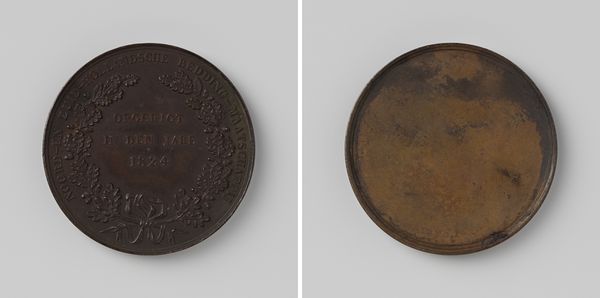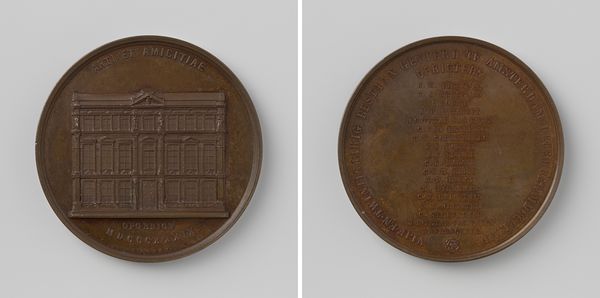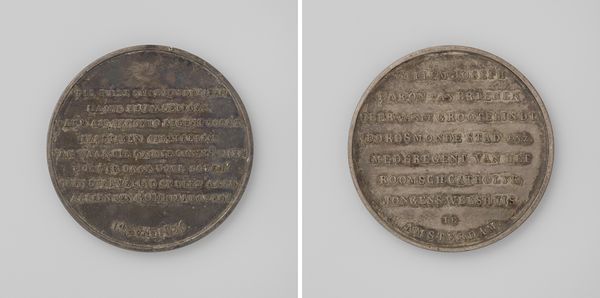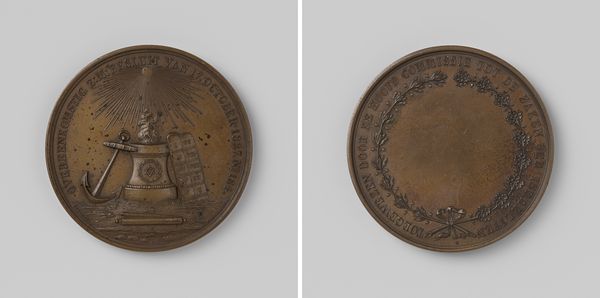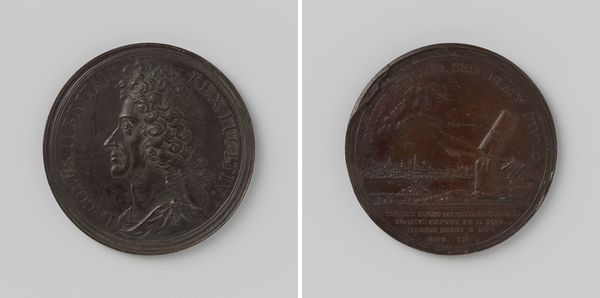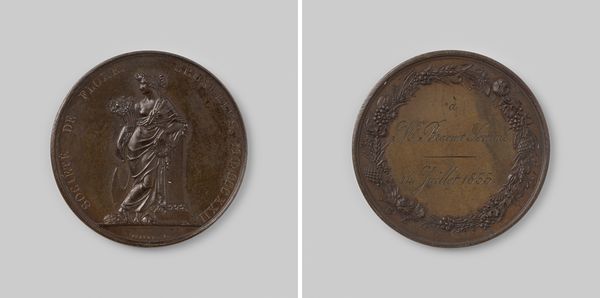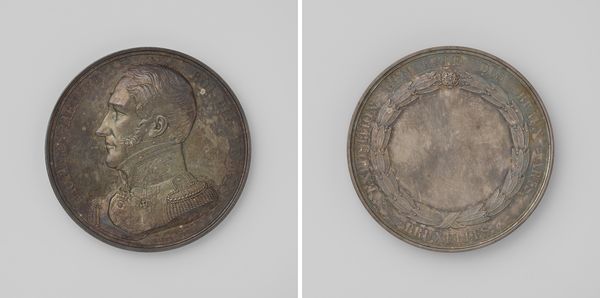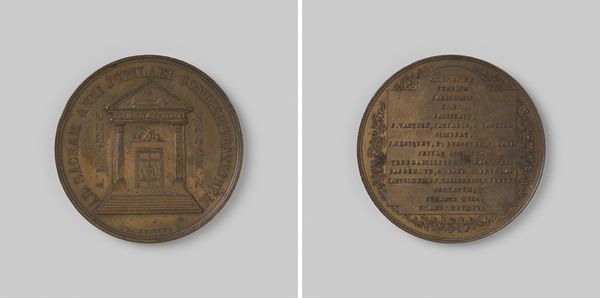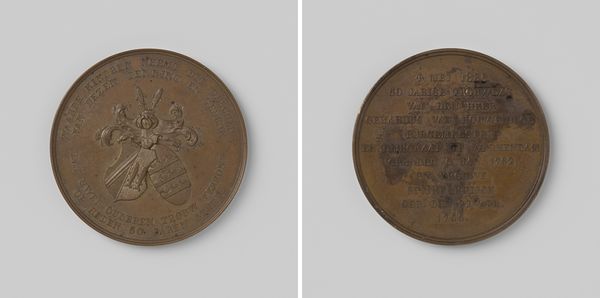
Eerste vergadering van de Confederation Generale du Liberalisme Belge op het stadhuis van Brussel, onder voorzitterschap van Defacqz 1846
0:00
0:00
print, bronze, sculpture
#
portrait
#
neoclacissism
# print
#
bronze
#
sculpture
#
ceramic
#
history-painting
Dimensions: diameter 6.8 cm, weight 124.81 gr
Copyright: Rijks Museum: Open Domain
Editor: This is an interesting object, a bronze sculpture or print made in 1846, commemorating the first meeting of the Confederation Generale du Liberalisme Belge. The text seems very important, yet it's unreadable to me. What am I missing? How do you interpret this work, what stories does it tell? Curator: What you're seeing is more than just an aesthetic object; it's a historical artifact deeply embedded in the political landscape of 19th-century Belgium. Look closely— the inscription commemorates the birth of organized liberalism in the country. Considering that it's made of bronze and appears to be a kind of medal, how does that change our perspective? Who do you think was its target audience? Editor: So it’s not just art, it’s propaganda, too? Meant to legitimize or celebrate the Confederation? It’s almost like a commemorative coin. Curator: Precisely! And understanding that informs how we view it. This wasn't intended for a gallery wall but likely for distribution among members, supporters, and even potential investors of this budding political movement. The use of bronze gives it a sense of permanence, associating the Liberal cause with lasting values, tradition and strength. What specific words or symbols might hold clues to the ideology it promotes? Editor: The wreaths imply triumph and perhaps victory? I notice the phrase "Constitution Belge" encircling the medal's front. It all seems to say, we’re here, we’re legitimate, and we’re tied to the fundamental laws of the country. Curator: Exactly. The medal links the liberal movement to the Constitution itself, framing their political aspirations as inherent to the Belgian nation's foundational values. This becomes a powerful form of self-representation. Consider how marginalized groups or political entities today might use similar symbolic strategies. How might contemporary activists re-interpret this format? Editor: I see what you mean. Understanding its function as propaganda changes everything. I’ll look at art in terms of power, from now on. Thanks for that perspective. Curator: Absolutely! Examining these artworks not only teaches us about history but provides tools for interpreting political narratives still circulating today.
Comments
No comments
Be the first to comment and join the conversation on the ultimate creative platform.

